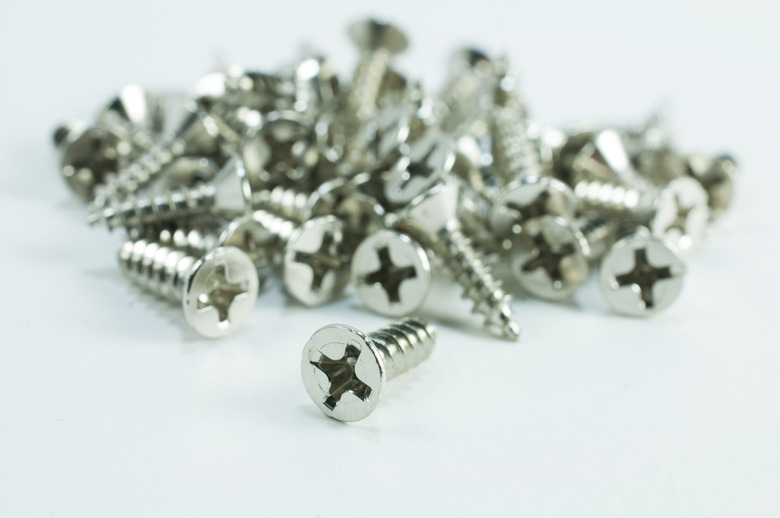What Is The Difference Between Wood Screws And Sheet Metal Screws?
We may receive a commission on purchases made from links.
There's a bit more to choosing the right screws for a project than selecting them based on their length, width, and composition. Wood screws and sheet metal screws are a bit different when it comes to their threads in particular, and using the wrong type on a project may not bring about the desired results. One easy way to tell the difference is that wood screws have wider spacing between threads, and sheet metal screws have comparatively tight threads and are threaded all the way up to the screw head. Here's what to know about wood screws and sheet metal screws.
Wood Screws
- Made specifically for use with wood.
- Fewer threads per inch than sheet metal screws of the same length.
- Smooth shank just beneath the screw head.
- Shank may noticeably flare out as it nears the screw head.
- Heads may be flat or domed and have slots or Phillips heads.
- Work best with a narrower pilot hole.
Sheet Metal Screws
- May be used in metal, hard plastics, and sometimes wood.
- More threads per inch than wood screws of the same length.
- Threaded all the way to the top of the shank.
- Shank may or may not flare slightly as it nears the screw head.
- Heads may have slots or Phillips heads.
- Require a pilot hole.
Check the Thread Spacing
Check the Thread Spacing
The best way to really comprehend the difference between wood screws and sheet metal screws is to look at them side by side. Look through your own stash to see if you have any with threads that are noticeably different from one another. If you don't keep metal screws around, remove a screw from a small appliance or other metal item temporarily if necessary just to look at the threads.
Another option is a quick visit to a hardware store. Look through the bins of wood screws and sheet metal screws, comparing one of each type and of the same length. The thread spacing is visibly farther apart on a wood screw, and a wood screw sometimes seems just a little pointier than a comparable metal screw.
Wood Screw Basics
Wood Screw Basics
The most common wood screws share similar features in that they have fewer threads per inch than sheet metal screws of the same length, even though the actual spacing on wood screw threads may vary depending on whether the screw is best used for hard or soft woods. Wood screws often have an area just beneath the screw head that has no threads at all, which is the most obvious indicator that it's intended for wood. This purposeful design element helps prevent wood from splitting or cracking during screw installation. In many cases, the total threaded area is only about an inch long, with the rest of the shank unthreaded and smooth.
Moving from the shank toward the head, a wood screw often flares out a bit, which is another easy way to determine if it's a wood screw as long as part of the shaft beneath it is unthreaded. Wood screws work best in most cases after drilling a narrower pilot hole to get them started. The tops on wood screws may be flat or domed and have slots or Phillips heads to fit the respective screwdrivers. As with virtually any type of screw, specialty wood screws might require different driver types or may have special features, such as self-tapping capabilities.
Sheet Metal Screw Basics
Sheet Metal Screw Basics
Sheet metal screws almost always have more threads per inch than wood screws, and they're always threaded all the way up to the screw head. Another screw used in metal, a machine screw, is similar to a sheet metal screw but with so many threads per inch that it might be difficult to even notice the threads sloping up toward the top of the screw compared to the quite obvious slope of a wood screw's thread.
Sheet metal screws can be used in metal, plastic, or even wood in a pinch. They're usually self-tapping but not self-drilling, which means they still require a pilot hole. If you're attaching wood to metal, a sheet metal screw is the better choice, as the threads are designed to hold fast in metal. Sheet metal screws might have slots or Phillips heads.
